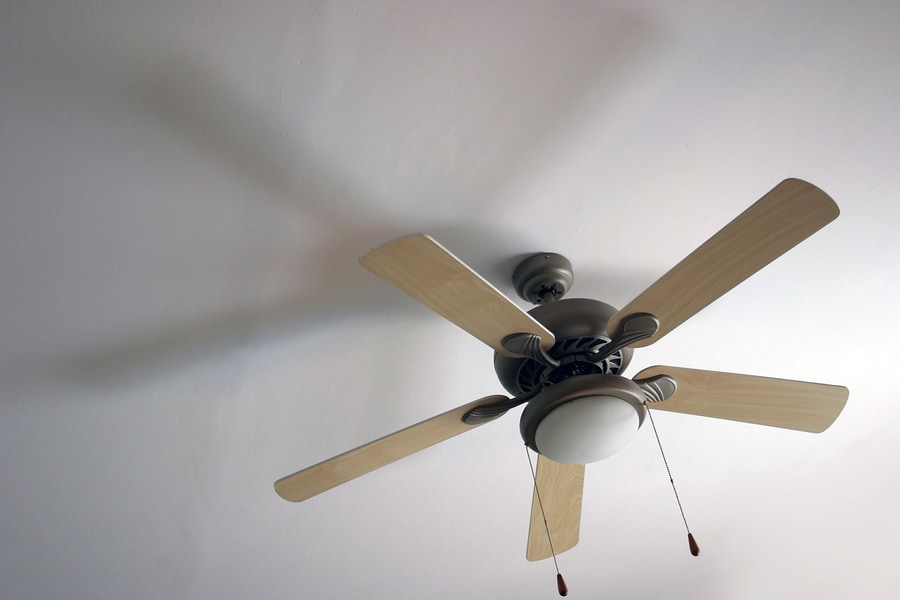Best Tips to Remove Speed Issues in Your Ceiling Fan
Has your ceiling fan begun to show it has gone old? Has it gone slower than before? If that’s the problem, you may be able to fix it yourself. Well, most of the time, ceiling fans retain their speed after simple cleaning and maintenance.
Modern-day ceiling fans have three built-in speeds, and some of them offer 4-speed control. Plus, they usually feature two rotational directions to help maintain the room temperature in all seasons. These features allow homeowners to save-energy while keeping up with the room comfort.

Ceiling fans don’t require too much maintenance, which probably is the basic reason why homeowners don’t usually notice the slowness of speed, too soon. In this post, you will learn how you can identify the problems of slowdown and what you should do to remove these issues.
When your ceiling fan begins to slow down, it’s a sign of aging. Initially, you wouldn’t be able to notice the decrease in speed, but as the time passes, you’ll feel the slow air movement, or perhaps there would be none.
How Aging Affects the Speed of Your Ceiling Fan
Regular inspection is an easy way to maintain a ceiling fan. It doesn’t take much of your time and allows you to pin-point and eradicate the problem then and there. Your ceiling fan slows down due to three main factors:
- The imbalance in fan blades
Imbalance in ceiling fan can be identified easily. If your ceiling fan shakes or wobbles, or even moves around on high speed, there must be a problem with one or all of the fan blades. Check whether any of the fan blades is bent, warped or fixed at a different angle than those of other fan blades.
You need to replace the badly damaged fan blade. However, if it is slightly bent, you may be able to push it and bend it back to its original condition.
- Bearings get damaged or become old
The bearings of your ceiling gum up due to oil or dirt accumulation, or they get dried and need oiling. You can identify this problem by spinning the fan blades with hand. If you observe that the fan blades do not move freely, that must be because of the bearings.
- Bad capacitor
While checking your ceiling fan for slow speed, if there is no issue with the fan blades (no wobbling or shaking in the fan) and the bearings work properly, there’s may be a problem with the motor. If you replace the motor, be sure to do so with one having similar fan rating.
5 Steps to Increase Your Ceiling Fan’s Speed
With the help of basic maintenance activities, you can improve the speed and efficiency of your ceiling fan. You are going to need the following items:
- Dust attraction cloth (or lint-free cloth)
- Lubricant
- Screwdriver
Step 1: To Fix the Vibration Issue in Fan Blades
- Use dust attraction cloth to properly clean the blade surface.
- Tighten up any loose screws that attach the fan blades with rotating center.
Step 2: To Lubricate the Moving Parts
- Follow the instruction manual to fill up the oil reservoir of your ceiling fan. Use 20, 15 or 10-weight oil as per instructions.
- Make sure, the oil reservoir is clean. To clean the oil reservoir, fill new oil and give your fan a few rotations. Remove the oil and refill the reservoir.
Now, switch on the fan and notice if these steps have increased the fan speed. If the fan continues to run slow, you need to check the wiring and the switch.
Intermediary Steps
Step 3: Check the Pull Chain Switch on Your Ceiling Fan
There may be a problem with the switch, or perhaps the fan-speed setting is missing.
- Switch off the fan and wait until it comes to rest.
- Set the fan on the lowest speed with the help of the chain and switch on the fan.
- Now, keep your eyes and ears on the fan motor while increasing the speed with the help of the chain.
- If the motor speed does not increase after every pull, it means, there’s a problem with the switch.
Step 4: Inspect the Wiring
- Inspect the point where the chain switch has been wired to the ceiling fan. There may be a few loose connections, or you may find a few bare wires.
- Reconnect the loose wires.
- If there’s no problem with the wiring, you may need to replace the switch.
Step 5: Check the Motor
- If the problem persists even after replacing the switch, you need to check the motor windings that may be causing the slowness. Some of the windings in the fan motor control multiple speeds of the fan.
- Broken windings cannot be repaired. You may replace the old motor with a new one, or choose a new ceiling fan for your room.
Finally
Ceiling fans normally have long life, yet they often begin to run slow due to the lack of maintenance and cleaning. With proper and periodic maintenance, you can remove any flaws in your fan and keep it operating for years.
